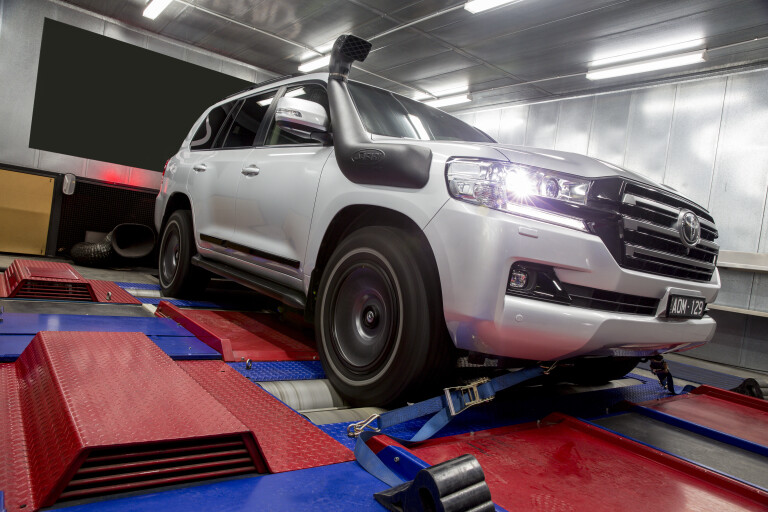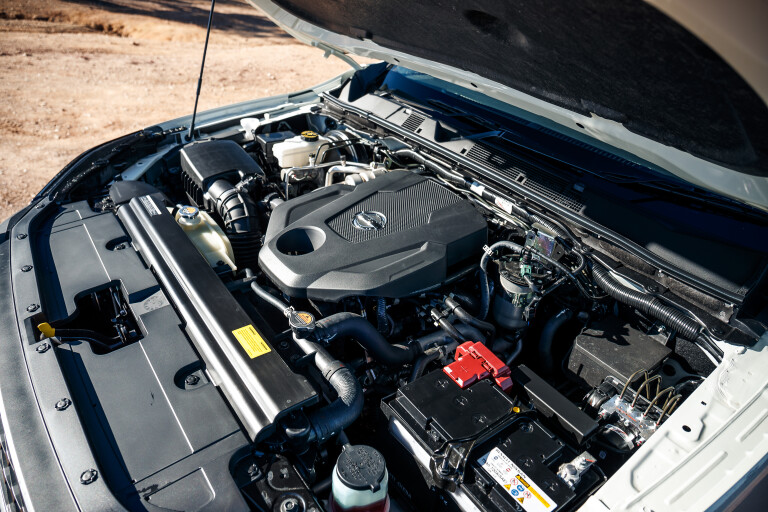
SEEMINGLY we all know someone whose chipped LC200, LC79, Ranger 3.2 or Amarok V6 makes more torque than you could jump over: “She’s good for 800Nm mate! Goes like a rocket.” Or perhaps it may be 900Nm, or 1000Nm, or more. Just depends on the ‘someone’ in question!
Well, if you’re sick of hearing this over and over, here’s how to shut them up. Just tell them that by itself 1000Nm counts for nothing and you can produce 1000Nm by doing absolutely nothing once you have the ‘test apparatus’ in place. Here’s how it works.
You need a decent-sized mate who tips the scales at 102kg. You also need a metre-long truckie’s wheel-wrech with an old metal tractor seat welded to one end of the spanner. The same tractor that supplies the seat also has rusted near-solid wheel nuts on its large-diameter rear wheels. Attach the spanner to one of those wheel nuts so that the spanner is horizontal to the ground and then have your mate sit on the tractor seat welded to the other end of the spanner, without his weight touching the ground.
Now have a beer as that is all there is to be done. Thanks to the force of gravity acting down on your mate there’s a 1000Nm twisting force (or torque) being applied on the wheelnut at the other end of the spanner.

It works like this. Gravity (measured as an acceleration of 9.8 metres per second per second) acts down on your mate’s 102kg mass to produce a downwards vertical force of 999.6 (9.8 x 102) Newton on the end of the spanner, Newton (N) being the standard measurement of force in the metric system.
One metre away at the other end of the spanner, the twisting force or torque being applied to the nut then becomes 999.6 Newton-metres (Nm). Let’s call it 1000Nm. If the spanner was two metres long, and thus providing double the leverage, you’re looking at 2000Nm of torque at the nut.
Now while all of that may sound impressive, it unfortunately counts for nothing. Yep, nothing. With no movement at the nut you’re not producing any power, and power is what gets things done. Torque is just the enabler.
If the rusted-on nut starts to turn on the stud then you’re producing power, which is being spent overcoming the friction between the nut and the stud.
"Huge torque numbers are only useful if you can produce them at significant rotational speeds"
When it comes to engines, huge torque numbers are only useful if you can produce them at significant rotational speeds. Our 1000Nm being produced at an engine speed of just one revolution per minute would produce just over one tenth of one kilowatt (kW). But if you can produce 1000Nm at 1000rpm you’re already up to a handy 105kW, while 1000Nm at 2000rpm will net you close to 210kW, which is more than handy.
Power is of course, a product of torque multiplied by engine speed. For any given engine speed, doubling the torque will double the power. Likewise, for any given torque output doubling the engine speed will double the power.
So by themselves, huge torque numbers count for nothing. But if you have lots of torque, then it’s a lot easier to produce effective power. And it’s power, rather than torque, which is the ultimate arbiter of the performance capability of your 4x4, even if the torque flavours the nature of the power delivery.
Without useful torque an engine has to rely on high revs to make decent power, which is not ideal for many reasons, not the least being driveability and reliability.

COMMENTS